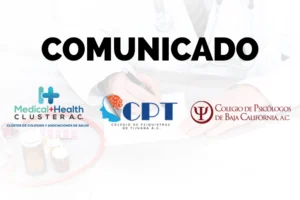En atención a la creciente preocupación sobre la confianza en...
Leer más
Why Have We Waited So Long for a Malaria Vaccine?

Despite a global effort to eradicate malaria, a large malaria burden persists, in part due to the repeated emergence of parasite resistance to antimalarial drugs and mosquito resistance to insecticides. In 2019, an estimated 229 million malaria cases were reported worldwide, leading to more than 400,000 deaths, the majority being among young children in sub-Saharan Africa. Vaccination has been the key to mitigating the adverse effects of many human infectious diseases, which has even led to the eradication of some. Thus, vaccines are considered the most promising approach for the control and eventual elimination of malaria. Though malaria has been around since the dawn of humanity, developing a vaccine to stop this deadly disease has been challenging because natural infection does not lead to complete protection against subsequent infections or disease. So science must do better than the human immune system to design a successful vaccine.

Lauren M. Cohee, MD, MSc
The World Health Organization recently made history by recommending the use of the RTS,S malaria vaccine (Mosquirix) in children who are living in areas of high malaria burden. This groundbreaking announcement made RTS,S not only the first malaria vaccine but also the first vaccine against any human parasite. Although this is cause for celebration, the efficacy of the vaccine (it prevents only approximately 30% of severe disease cases) means that this vaccine will save lives but will also leave many children vulnerable. This efficacy compares poorly with other routinely administered childhood vaccines, such as measles (97% efficacy) and poliomyelitis (90% to 99% efficacy), as well as in comparison to the COVID-19 vaccines (95% efficacy). Why has developing an effective malaria vaccine been so elusive? Here we explore some of the challenges that have prevented the development of an effective malaria vaccine.

Miriam K. Laufer, MD, MPH
One answer lies in the intricate life cycle of the parasite. The infection enters the human host from the bite of an infective mosquito. After the infection, the parasite rapidly migrates into liver cells where it matures in 5-8 days. The parasite-induced rupture of liver cells releases parasites into the bloodstream, where they invade red blood cells. Whereas the liver stage is clinically silent, the development of the parasite in red blood cells is associated with the clinical symptoms of malaria.
In 1970, malaria vaccine researchers irradiated laboratory-reared Anopheles mosquitoes that carried malaria infection in order to weaken the parasite, creating a prototype attenuated whole-organism vaccine. These attenuated parasites were delivered by mosquito bites to healthy volunteers and were shown to induce protection from malaria infection. Since then, more than 140 clinical trials of malaria vaccines have been registered and completed, with RTS,S being the most advanced of these vaccine candidates. Some malaria vaccine candidates target the liver stage to prevent infection and subsequent disease, whereas many vaccine candidates are based on blood-stage proteins and aim to reduce disease severity and death.
Plasmodium falciparum, the deadliest human malaria parasite, has more than 5400 genes. Given the large number of proteins that are expressed across a complex life cycle, identifying “essential” proteins that could be used as vaccine candidates has been difficult. The validation and identification of new malaria vaccine candidates are also limited by the lack of typical tools for vaccine development, such as reliable markers of protection, in vitro assays that measure protein function, and animal models that mimic human biology. Though much work has gone into generating these tools for vaccine development, none have been proven reliable for human malaria infection and disease, thus hindering the selection of candidates for further evaluation in clinical trials.
The immune response against malaria involves natural defense mechanisms and acquired responses, including cellular- and antibody-mediated immunity. The natural immune response in the liver is mostly cellular because the parasites develop inside hepatocytes, whereas the responses during the blood and the mosquito stages are primarily antibody-driven. Cellular- and antibody-based immunity are not mutually exclusive. However, research tools are often only capable of examining one form of immune response or the other, which limits the ability to design and study vaccine candidates that induce both responses. Furthermore, simply having a high and durable immune response against parasite proteins may not be enough to induce protection. Exploratory analyses of completed clinical trials have shown that high and durable humoral responses to vaccination did not translate into protection against disease or clinical symptoms. This highlights the fact that parasite proteins exposed to the immune system may not generate neutralizing antibodies and may be a means of diversion by the parasite. Teasing apart immune responses that are functionally protective from those that are a smokescreen has been a considerable challenge.
Another factor that has impeded the development of an effective malaria vaccine is the high degree of genetic variability of vaccine candidate antigens that went into clinical testing. Like other pathogens that have evolved to escape host and, thus, vaccine-induced immunity (such as HIV, pneumococcus, influenza, and SARS-CoV-2 variants), specific immune response limits the efficacy with whole sporozoite and subunit malaria vaccines tested in field-based clinical trials with highly diverse parasites. In vitro and field studies suggest that cross-protection against diverse variants can be achieved if strategies are taken to identify the most representative variants in the field and use them in vaccine design before preclinical studies — similar to the approach taken with annual influenza vaccines.
In light of these challenges, the protection provided by the RTS,S vaccine is a tremendous step forward, and the implementation of the vaccine will save lives. Data modeling suggest that in association with other malaria control measures, the vaccine will prevent 16.8 million malaria cases and 113,000 malaria deaths in the vaccinated cohort for over 15 years. However, to attain the goal of malaria elimination, a highly efficacious malaria vaccine is still needed. As was done with COVID-19, the best approaches and technologies should be used to inform the design of the next generation of malaria vaccine candidates. In fact, mRNA-based malaria vaccines are already being tested in mice and may soon move to clinical trials. Lessons learned through this modern pandemic, including the ability to mobilize resources and apply innovative approaches, will help us eradicate one of our most ancient diseases.
https://www.medscape.com/viewarticle/962419?src=soc_fb_211109_mscpedt_news_mdscp_malaria&faf=1#vp_1
Créditos: Comité científico Covid




